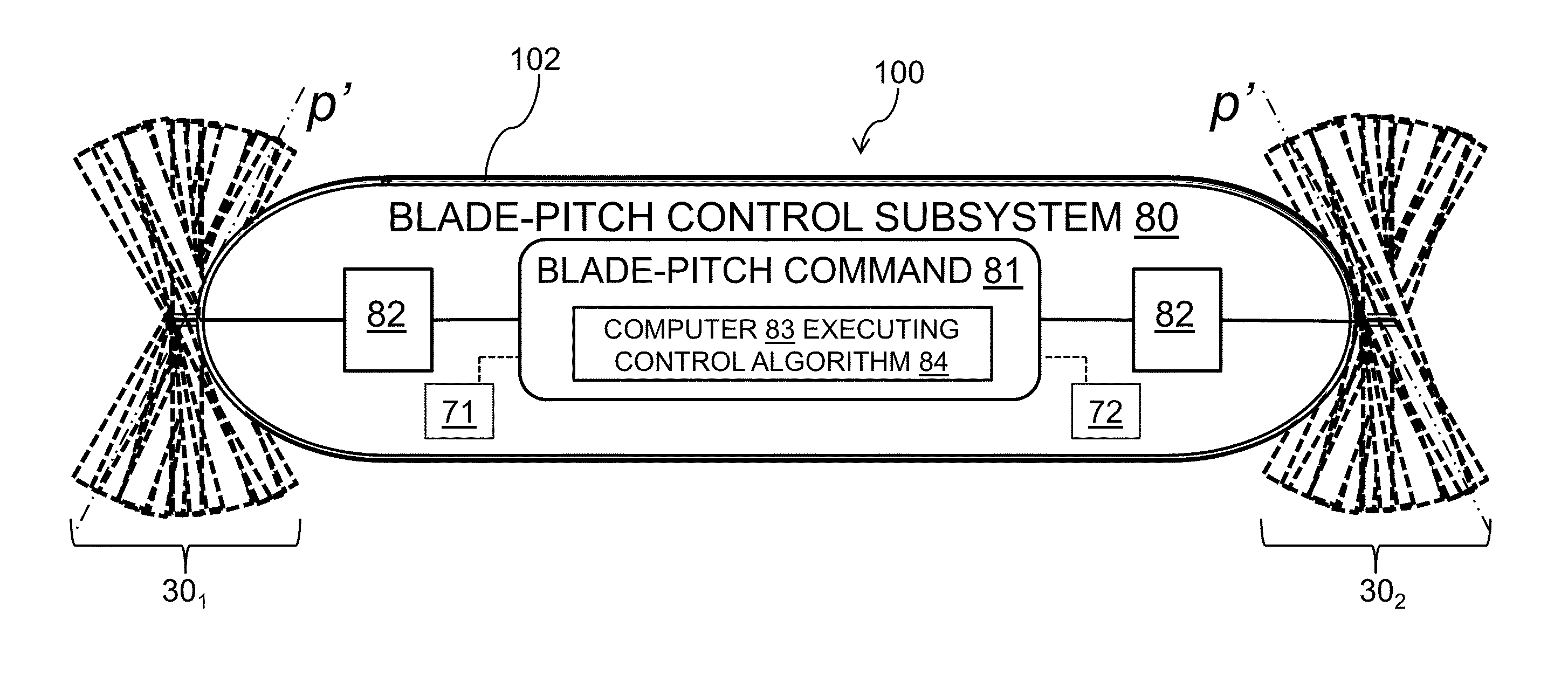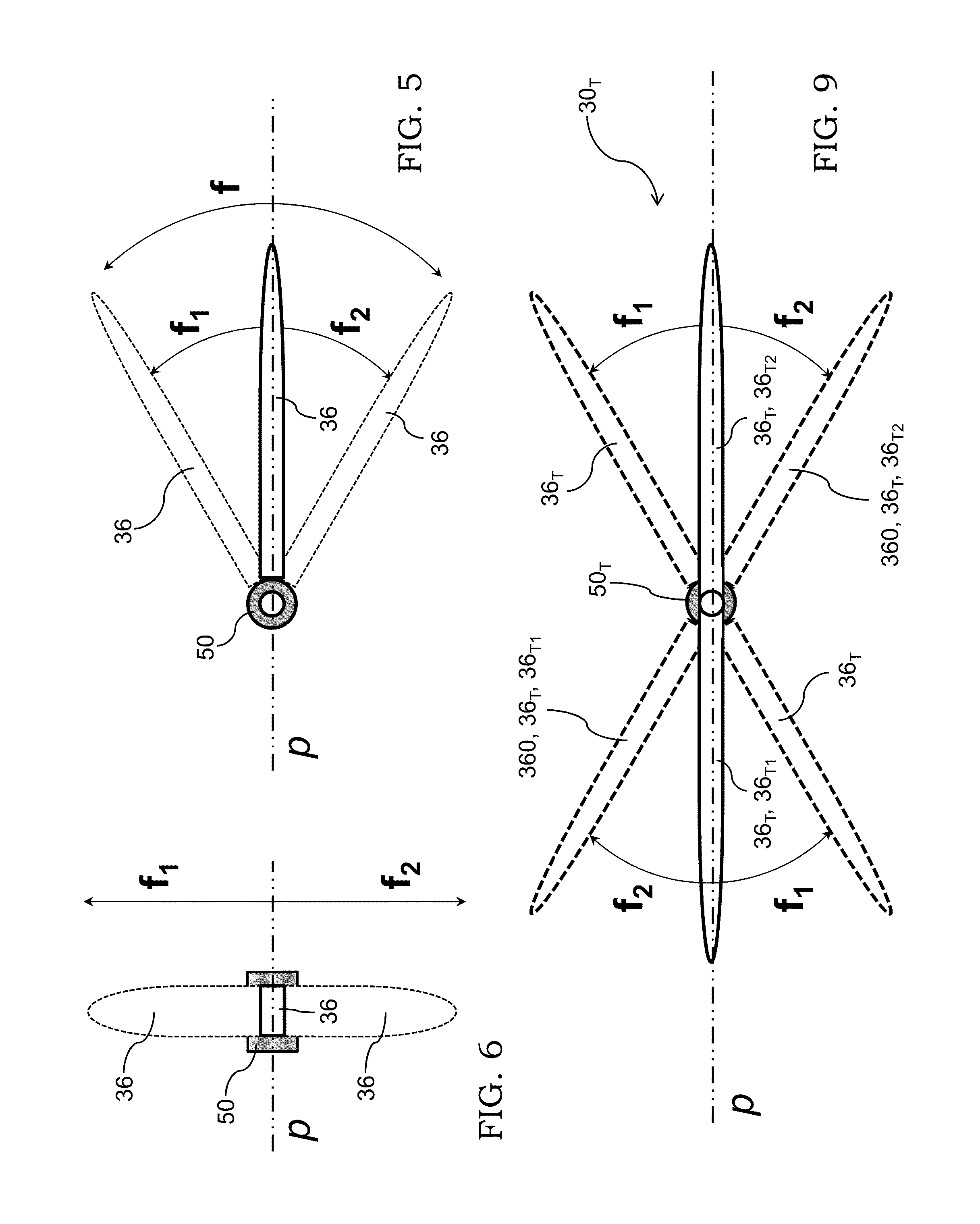Marine propulsion-and-control system implementing articulated variable-pitch propellers
a technology of variable pitch propellers and propulsion control systems, applied in the field of dual-propeller-based systems, can solve the problems of limited maneuverability and thrust vectoring capability, and the use of additional or alternative devices, such as thruster groups and moveable propulsor pods, is also limited in same or similar respects
- Summary
- Abstract
- Description
- Claims
- Application Information
AI Technical Summary
Benefits of technology
Problems solved by technology
Method used
Image
Examples
Embodiment Construction
[0024]Referring now to the figures and particularly to FIGS. 1, 7, and 8, three-bladed propeller 30 includes a propeller shaft 32, a propeller hub 34, and three propeller blades 36. Each blade 36 has a blade tip 39. Blades 36 are arranged symmetrically about the central hub 34 in a generally coplanar manner so as to approximately define a geometric plane p that is perpendicular to shaft 32. Each blade 36 is generally characterized by a geometric longitudinal axis c that generally lies in geometric plane p, which generally describes the geometric rotational plane of propeller 30. Plane p represents the “zero-angle tip-path plane”—i.e., the geometric plane in which normally lies the path of the blade tips 39.
[0025]The depictions herein of propellers are diagrammatic and are not intended to convey specificity or preference with regard to blade shapes and other geometric aspects of propellers. The skilled artisan who reads the instant disclosure will appreciate that inventive principles...
PUM
 Login to View More
Login to View More Abstract
Description
Claims
Application Information
 Login to View More
Login to View More - R&D
- Intellectual Property
- Life Sciences
- Materials
- Tech Scout
- Unparalleled Data Quality
- Higher Quality Content
- 60% Fewer Hallucinations
Browse by: Latest US Patents, China's latest patents, Technical Efficacy Thesaurus, Application Domain, Technology Topic, Popular Technical Reports.
© 2025 PatSnap. All rights reserved.Legal|Privacy policy|Modern Slavery Act Transparency Statement|Sitemap|About US| Contact US: help@patsnap.com



